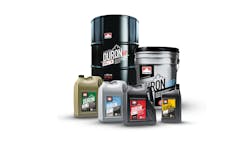Tech Tip: Selecting a heavy-duty engine oil
Selecting the correct engine oil is fundamental in allowing a heavy-duty vehicle to function efficiently. Engine oil is the lifeblood of heavy-duty equipment, protecting the internal components of the engine and preventing wear that can lead to unplanned maintenance, breakdowns, and in extreme cases, engine failure.
Engine oils play a vital role in maintaining the efficiency and operation of heavy-duty engines. High-quality lubricants help minimize metal-to-metal contact between moving components, which reduces pumping and rotational losses, and therefore improves the engine’s efficiency. Lubricants also provide essential protection to the engine’s inner workings, helping to prevent wear that can result in unplanned maintenance and downtime. This means that the right choice of lubricant can save fleet managers and operators time and money.
Consult the OEM
Fleet managers should always start by consulting the Original Equipment Manufacturer (OEM) vehicle manual as it should provide advice on which oil to choose for their engine. If you need more advice than the manual provides, reach out to the OEM directly for more information as they will be able to provide a recommendation based on the engine’s specification.
Consider the conditions
The environment and operating conditions of the engine should always be one of the first considerations when selecting a heavy-duty engine oil. The temperature range that lubricants can perform optimally in is denoted by its SAE grade. For fleets operating in colder regions, it’s important to look for the number before the ‘W’, which denotes ‘winter’ (not ‘weight’, as some believe). Lower numbers, such as an SAE 5W-40 or 0W-40 grade oil, means it flows better at lower ambient temperatures.
The SAE grade is a measure of the oil’s viscosity. The viscosity of the oil dictates its ability to flow and move around the engine to lubricate its inner workings. In cold conditions, if the oil’s viscosity is too high (and the oil is too thick), it may not move around the engine easily. This delays the lubrication of vital engine components resulting in increased engine wear.
Compare the performance of the lubricants
There are three types of engine lubricant that should be considered by fleet managers: full synthetic, synthetic blend, and conventional. Full synthetic and synthetic blend engine oils offer better stability than non-synthetic oils and provide improved performance in varied weather conditions. Performance enhancing additives are also added to fully synthetic oils to provide greater levels of performance.
Look for proof points
Proof of the oil’s ability to perform and comply with global regulations is also vital. For fleets in North America, proof of API CK-4 or FA-4 certification as well as OEM approval is important to demonstrate the oil’s compliance with strict industry standards. Testimonials and case studies are also valuable examples of in-service use, as is testing carried out by the oil manufacturer. For example, HollyFrontier Lubricants & Specialties puts its Petro-Canada Lubricants DURON products through rigorous and comprehensive testing to demonstrate DURON’s performance and durability.
Seek expert advice
The final step that should be undertaken is to seek expert support and guidance from a reputable lubricant manufacturer. Manufacturers invest in product testing so that they can share valuable information, insight, and informed recommendations to fleet managers, so it’s important to know that they have specialist teams that can offer advice for fleets. HollyFrontier Lubricants & Specialties Technical Service Advisors are available to help.
Darryl Purificati is the OEM Technical Liaison at HollyFrontier Lubricants & Specialties, which includes the Petro-Canada Lubricants brand.
